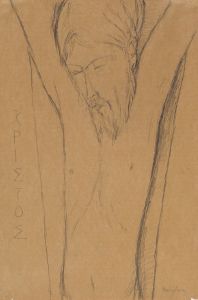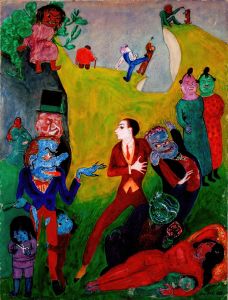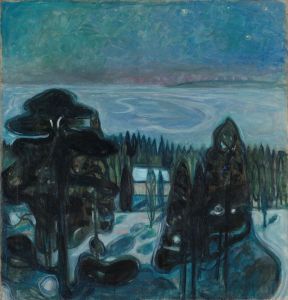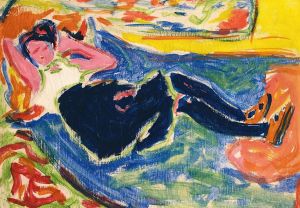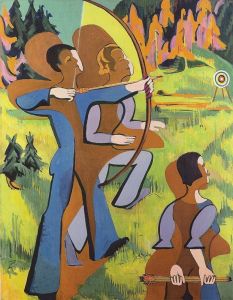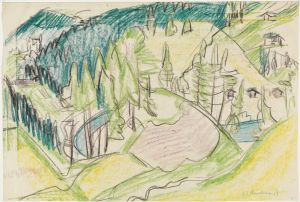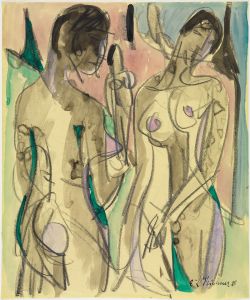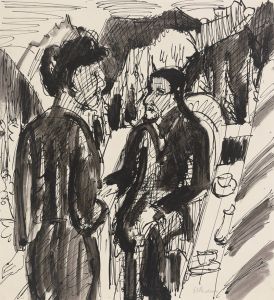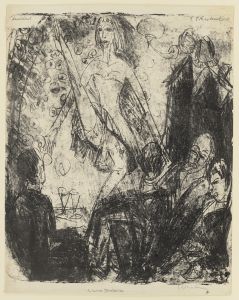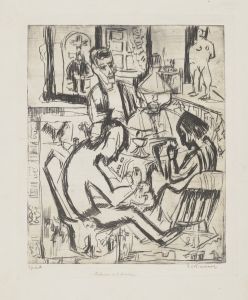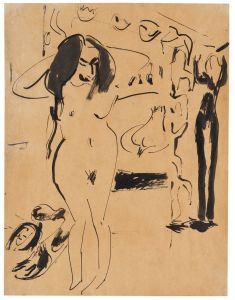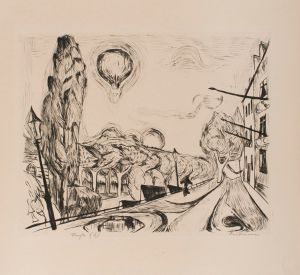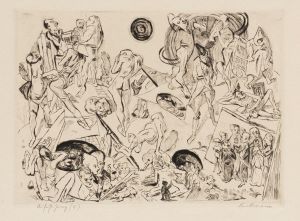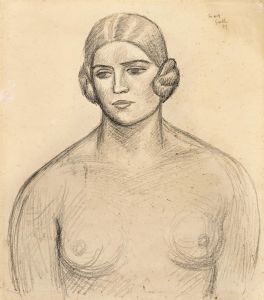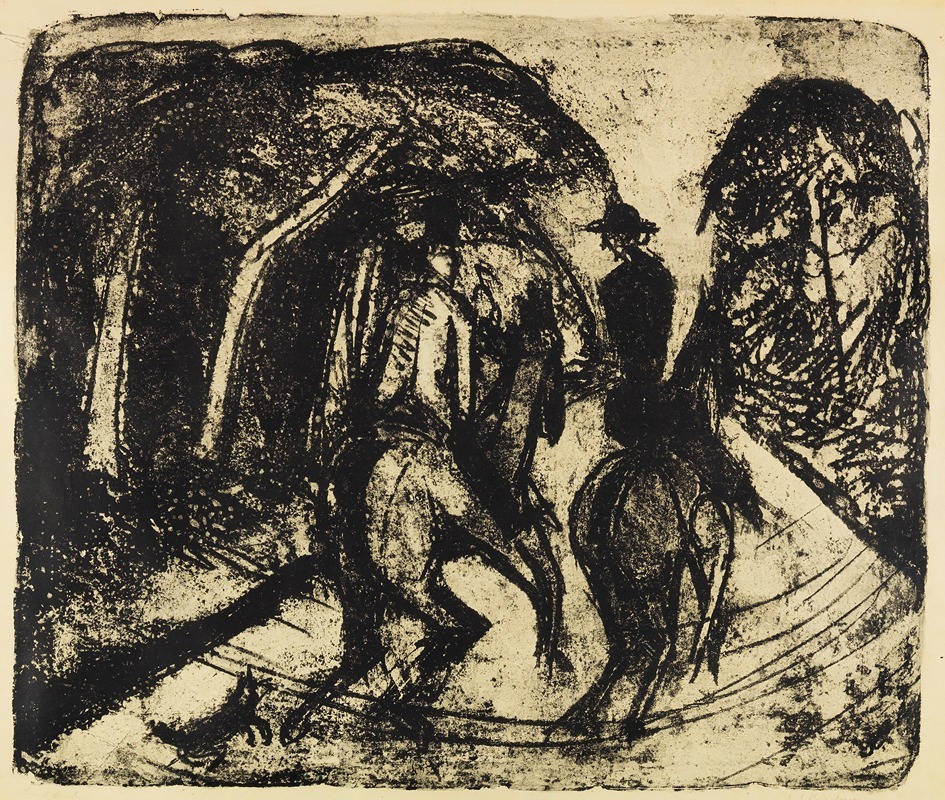
Reiter im Grunewald
A hand-painted replica of Ernst Ludwig Kirchner’s masterpiece Reiter im Grunewald, meticulously crafted by professional artists to capture the true essence of the original. Each piece is created with museum-quality canvas and rare mineral pigments, carefully painted by experienced artists with delicate brushstrokes and rich, layered colors to perfectly recreate the texture of the original artwork. Unlike machine-printed reproductions, this hand-painted version brings the painting to life, infused with the artist’s emotions and skill in every stroke. Whether for personal collection or home decoration, it instantly elevates the artistic atmosphere of any space.
Ernst Ludwig Kirchner's painting Reiter im Grunewald (translated as Rider in the Grunewald) is a work by the German Expressionist artist, created in 1913. Kirchner was a founding member of the art movement Die Brücke (The Bridge), which sought to break away from traditional academic art and explore more emotional, raw, and vibrant forms of expression. His works often reflect the dynamic energy of modern life, as well as his interest in nature and the human figure.
Reiter im Grunewald depicts a rider on horseback in the Grunewald, a large forested area near Berlin. The painting is characteristic of Kirchner's style during this period, marked by bold, angular forms, vivid colors, and a sense of movement. The rider and the surrounding landscape are rendered in a way that emphasizes emotional intensity rather than realistic representation. The use of exaggerated forms and non-naturalistic colors is typical of Kirchner's approach to capturing the essence of his subjects.
This painting was created during a time when Kirchner was living and working in Berlin, a period that significantly influenced his artistic development. The Grunewald forest, located on the outskirts of the city, provided a retreat from the urban environment and served as a source of inspiration for several of his works. The theme of a rider in a natural setting reflects Kirchner's interest in the relationship between humans and nature, a recurring motif in his art.
The painting is also notable for its connection to the broader Expressionist movement, which sought to convey subjective emotions and experiences rather than objective reality. Kirchner's work during this time often explored themes of alienation, modernity, and the tension between urban and rural life.
Today, Reiter im Grunewald is recognized as an important example of Kirchner's contribution to modern art. It reflects his innovative use of color and form, as well as his ability to capture the emotional resonance of his subjects. The painting is held in a private collection and has been exhibited in various retrospectives of Kirchner's work, contributing to the understanding of his artistic legacy.
This concise overview is based on available historical information about the painting and its context. Further details about its provenance or specific exhibitions may not be publicly documented.





